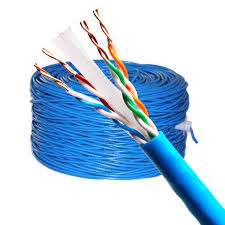
The Advantages of Using CAT5 Cables for Network Installations
In an era where technological advancements occur with lightning-fast speed making sure your network infrastructure can keep up. While CAT5 cableshave been a standard choice for wiring your network, their role in future-proofing your network isn’t as clear. Here’s how CAT5 cables are incorporated into the overall picture for future-proofing the network and the issues to be considered.
1. Understanding the capabilities of CAT5: CAT5 cables, introduced in the early 1990s, offer network speeds as high as 100 Mbps. They were made to work at frequencies as high as 100 MHz. They’re adequate for standard networking tasks, such as browsing the internet or streaming video at standard resolutions. However, as the speed of internet and network demands increase, CAT5 cables may become a limiting factor.
2. Comparing with Newer Standards Technology advances and newer standards in cable technology like CAT5e, CAT6, and CAT6a have improved performance. CAT5e, an improved version of CAT5, supports the gigabit speed (1 Gbps) and is better at reducing crosstalk and makes it more suitable for the needs of modern networks. CAT6 and CAT6a further increase performance, supporting speeds as high as 10 Gbps across short distances and frequencies of up to 250 MHz and 500 MHz, respectively.
3. Longevity of CAT5 Cables While CAT5 cables are generally adequate for older network setups as well as applications with low bandwidth, they’re not ideal for future-proofing your network. With the rise of high-speed internet as well as the growing demand for streaming video in high definition gaming, large transfer of files, relying exclusively to CAT5 cables could hinder your network’s performance as well as its scalability.
4. Future-Proofing Considerations: To future-proof your network, think about using CAT5e and CAT6 cables instead of CAT5. These cables have higher speed and bandwidth. They also support faster speeds, which means that your network can withstand any future technological advancements without the complete overhaul of your network. Furthermore, investing in better-quality cables will save you money over the long term which will reduce the need for future repairs and upgrades.
In conclusion, while CAT5 cables were a great choice in the past, they might not be the best option for securing your network in the future. Moving to CAT5e or CAT6 cables can provide better performance and guarantee that your network is in a position to meet the ever-changing technological demands. By planning ahead and investing in better cables will ensure your network’s durability and effectiveness.